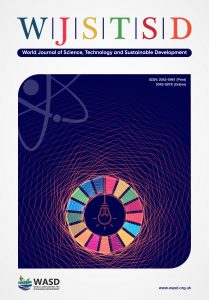Dirty industries’ competitiveness in EU’s new members, Dr. Hasan Karaduman and Prof. Feride Gonel
Dr. Hasan Agan Karaduman , Prof. Feride Gonel
, Prof. Feride Gonel
Department of Economics
Yildiz Technical University, Istanbul
Turkey
Email: hasankaraduman@gmail.com
DOI: 10.1108/WJSTSD-02-2016-0016
Purpose: Despite the success in achieving the objectives for the use of renewable energy sources, the EU' s competitiveness is not at the desired level. In particular, the largest decreases in fossil-type energy intensity were observed in last 13 members of EU, namely, Bulgaria, Croatia, Cyprus, Czech Republic, Estonia, Hungary, Latvia, Lithuania, Malta, Poland, Romania, Slovakia and Slovenia. The purpose of this paper is to trace how these countries protect the competitiveness of their dirty (energy-intensive) industries.
Design/methodology/approach: The study employs revealed comparative advantage (RCA) indices to measure the comparative advantage (CA) of EU-13 in dirty industries for the period 1995-2014 and assesses these indices in the framework of EU’s climate policy.
Findings: Some policies which make industries to adapt EU' s 20-20-20 targets are forcing industries. In order to compete, these industries are leaving Europe and looking elsewhere. In this study the authors found that, particularly chemicals and non-metallic mineral manufactures resulted in a weakening of their CA over the years in some of these members. Similarly it is found that the RCA indices of iron and steel and non-ferrous metals are decreasing.
Originality/value: The study addresses the EU-13’s position in terms of their competitiveness and find the connection with the EU' s climate policy through their RCAs of dirty industries.
Keywords: European Union; Revealed comparative advantage; Climate policy; Energy policy; Energy-intensive industries.
Citation: Karaduman, H.A. and Gonel, F. (2016), "Dirty industries’ competitiveness in EU’s new members", World Journal of Science, Technology and Sustainable Development, Vol. 13 No. 3, pp. 224-233. https://doi.org/10.1108/WJSTSD-02-2016-0016

